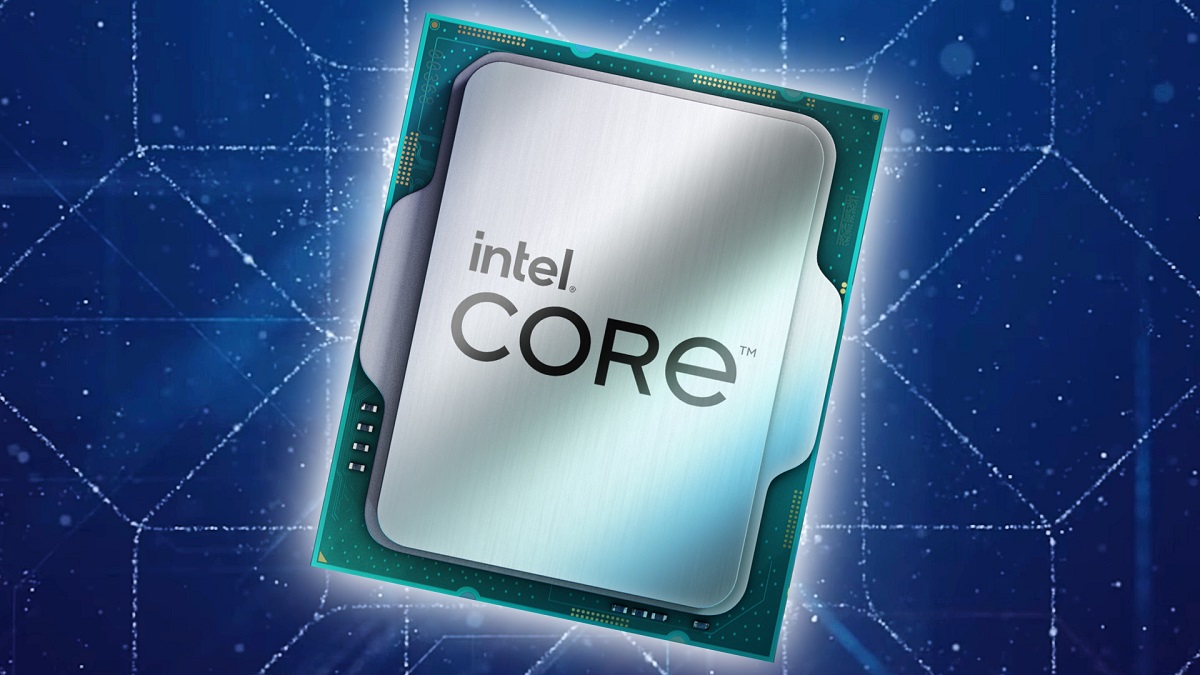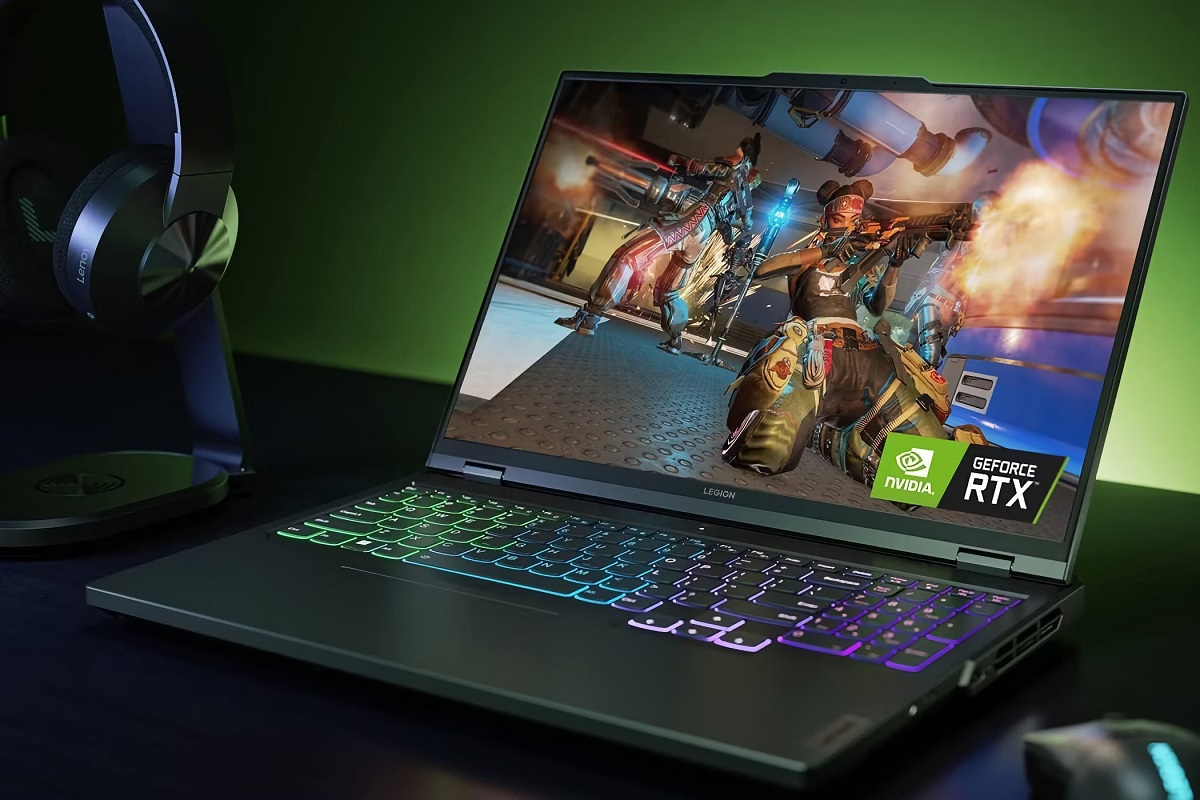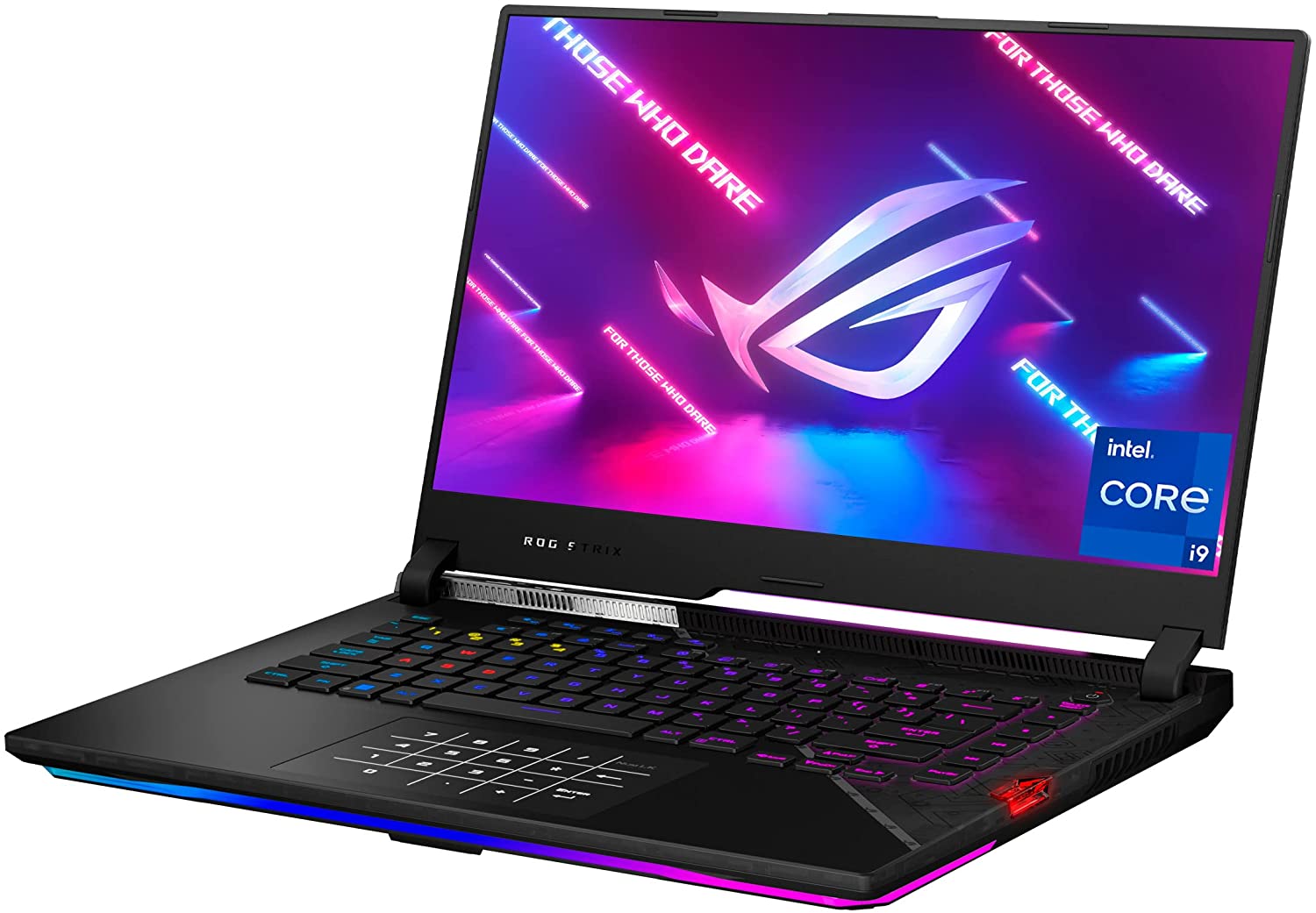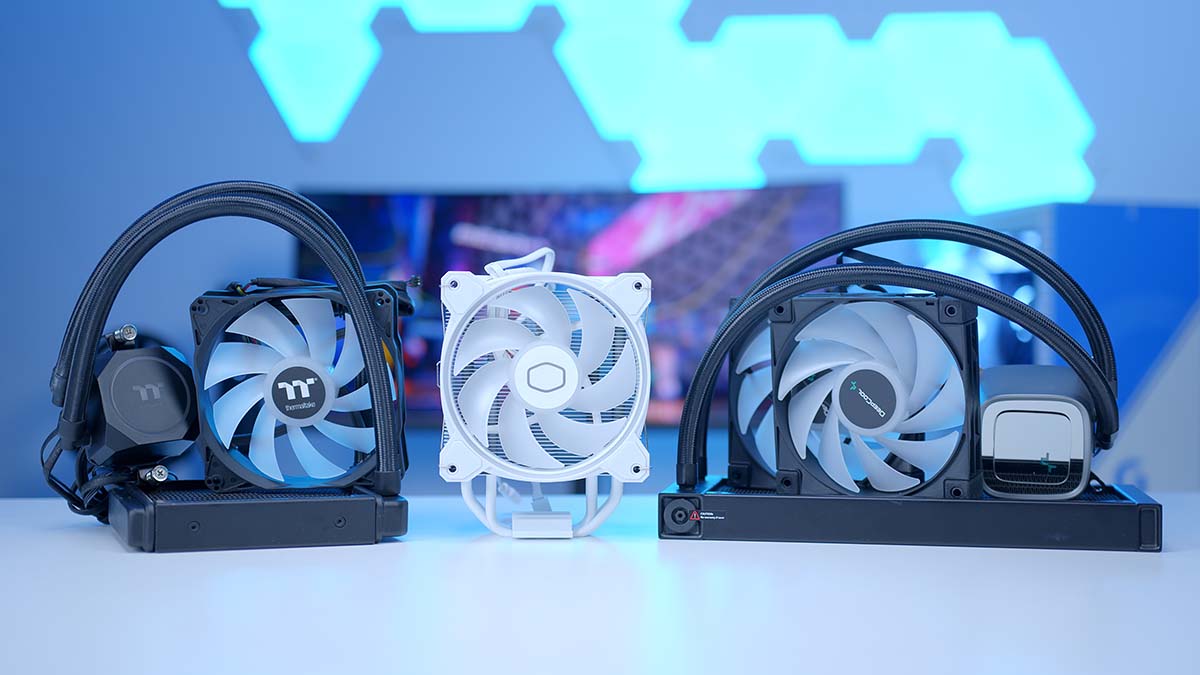Introduction
When it comes to computer performance, one of the key components that plays a crucial role is random-access memory (RAM). RAM serves as the temporary storage for data that your computer needs to access quickly. The more RAM your system has, the smoother and faster its overall performance will be.
If you’re using an Intel i5 processor, you might be wondering how much RAM it can support. The i5 processor is renowned for its balance of performance and affordability, making it a popular choice among computer users. However, the amount of RAM that an i5 processor can handle can vary depending on several factors, such as the specific generation of the processor and its architecture.
In this article, we will delve into the details of how much RAM an i5 processor can support. We will explore the different generations of the i5 processor and their respective RAM capabilities. Additionally, we will discuss the architecture of the i5 processor and its impact on RAM support. By the end of this article, you will have a clearer understanding of the maximum RAM your i5 processor can handle and the factors you need to consider when determining the appropriate amount of RAM for your system.
What is RAM and why is it important?
Before diving into the specifics of RAM support for i5 processors, let’s first understand what RAM is and why it is such an important component in a computer system.
RAM, or random-access memory, is a type of computer memory that provides temporary storage for data and instructions that the processor needs to access quickly. Unlike a computer’s hard drive, which stores data for the long term, RAM allows for fast and temporary data access, making it crucial for the smooth operation of your system.
When you open a program or perform a task on your computer, the relevant data and instructions are loaded into RAM for immediate access by the processor. This enables the processor to work efficiently and quickly, as it can retrieve the required information without having to constantly access the much slower hard drive. The more RAM your system has, the more data it can store temporarily, resulting in faster and more responsive performance.
RAM plays a vital role in multitasking as well. If you’re working on several applications simultaneously, each program requires its own space in RAM to store its data and instructions. Insufficient RAM can lead to a slowdown as the system struggles to juggle multiple tasks. With ample RAM, your computer can handle multiple applications with ease, allowing you to work more efficiently and without frustrating delays.
RAM also impacts loading times when it comes to accessing files and applications. When a file or program is stored in RAM, it can be retrieved almost instantaneously, significantly reducing those annoying wait times. This is particularly noticeable when working with large files or running resource-intensive software like graphic design programs or video editing software.
Overall, RAM is an important component in a computer system as it plays a crucial role in optimizing performance, multitasking capabilities, and loading times. The right amount of RAM can greatly enhance your computing experience and help you accomplish tasks more efficiently.
What is an i5 processor?
The i5 processor is a type of central processing unit (CPU) manufactured by Intel, one of the leading companies in the semiconductor industry. The i5 processor lineup is known for its performance, efficiency, and affordability, making it a popular choice for a wide range of computer users.
Intel has released several generations of i5 processors over the years, with each generation offering improvements in performance, power consumption, and features. The i5 processors are typically found in desktop computers, laptops, and even some high-end tablets.
One of the key features of i5 processors is their ability to handle tasks efficiently and handle multitasking effectively. With multiple processor cores, the i5 CPU can handle multiple threads simultaneously, allowing for smoother and faster performance while running multiple applications or demanding software.
What sets the i5 processors apart from other Intel processor models is their balance of performance and cost-effectiveness. While they may not offer the absolute top-tier performance of Intel’s i7 or i9 processors, they provide a significant boost in performance over lower-end models without the hefty price tag. This makes the i5 processors an attractive choice for mainstream users who require solid computing power without breaking the bank.
The specific features and capabilities of an i5 processor can vary depending on the generation. Intel typically introduces enhancements with each new generation, such as increased clock speeds, higher core counts, and improved integrated graphics capabilities. These improvements enable the i5 processors to handle a wide range of tasks, including web browsing, office productivity, media consumption, and even light gaming.
In summary, an i5 processor is a type of CPU manufactured by Intel, known for its balance of performance and affordability. It is a popular choice for a variety of computing needs, from everyday tasks to moderate gaming and multimedia consumption. The specific capabilities and features of an i5 processor can vary depending on the generation.
Different generations of i5 processors and their RAM support
Over the years, Intel has released multiple generations of i5 processors, each with their own specifications and RAM support. It’s essential to understand the RAM limitations of each generation when determining the maximum amount of RAM your i5 processor can handle.
The first generation of i5 processors, codenamed “Nehalem,” was released in 2009. These processors supported DDR3 memory technology and had a maximum RAM capacity of 16GB. Keep in mind that this early generation had limitations due to technology advancements at that time.
With the second generation, known as “Sandy Bridge,” introduced in 2011, Intel made significant improvements in performance and power efficiency. The Sandy Bridge i5 processors supported DDR3 memory as well but had an increased maximum RAM capacity of up to 32GB, enabling users to take advantage of more memory for improved multitasking and demanding applications.
The third-generation i5 processors, code-named “Ivy Bridge,” launched in 2012. Ivy Bridge processors featured better performance and power efficiency compared to the previous generation. The RAM support remained the same, with a maximum capacity of 32GB of DDR3 memory.
With the fourth-generation i5 processors, referred to as “Haswell,” released in 2013, Intel introduced DDR3L memory technology, which offered lower power consumption while maintaining compatibility with DDR3 memory. These processors had a maximum RAM capacity of 32GB, similar to the previous generations.
In 2015, Intel released the fifth-generation i5 processors, known as “Broadwell.” These processors continued to support DDR3L memory technology, maintaining a maximum RAM capacity of 32GB. However, it’s worth noting that there were mobile variants of these processors that also supported LPDDR3 memory, which is a type of low-power RAM used primarily in laptops and tablets.
With the sixth, seventh, and eighth generations, also known as “Skylake,” “Kaby Lake,” and “Coffee Lake,” respectively, Intel introduced DDR4 memory support for the i5 processors. These generations brought significant improvements in performance and power efficiency. The maximum RAM capacity increased to 64GB for desktop variants and 32GB for mobile variants.
In 2019, Intel released the ninth generation of i5 processors, named “Coffee Lake Refresh.” These processors continued to support DDR4 memory technology with a maximum RAM capacity of 64GB.
It’s worth noting that the specific RAM support can vary among different models within the same generation. Therefore, it’s essential to consult the technical specifications of your specific i5 processor model to determine the maximum RAM capacity it supports.
In summary, the RAM support of i5 processors depends on the specific generation. The earlier generations supported DDR3 memory, with a maximum capacity of 16GB or 32GB, while the later generations introduced DDR4 memory support, with a maximum capacity ranging from 32GB to 64GB.
i5 processor architecture and its impact on RAM support
The architecture of an i5 processor plays a significant role in determining its RAM support and overall performance. The design and structure of the processor impact how it interacts with RAM and affects the maximum amount of RAM it can handle.
An important aspect of i5 processor architecture is the memory controller. The memory controller acts as the bridge between the processor and RAM, managing data transfer and access. The efficiency and capabilities of the memory controller directly impact the RAM support of the processor.
With advancements in processor architecture, Intel has made significant improvements to the memory controller of its i5 processors. As a result, newer generations of i5 processors typically provide better support for higher RAM capacities.
For example, the transition from first-generation to second-generation i5 processors brought improvements to the memory controller, enabling support for larger RAM capacities. The same pattern applies to subsequent generations, where Intel continued to refine the architecture and enhance the memory controller’s capabilities.
Another factor that influences RAM support is the data path width. The data path width refers to the number of bits that can be processed in a single cycle. A wider data path allows for faster data transfer between the processor and RAM, which can have an impact on overall system performance.
As i5 processor generations have progressed, Intel has increased the data path width, allowing for improved memory access speeds. This, in turn, enhances the ability to support higher RAM capacities and ensures smooth data flow between the processor cores and memory modules.
Additionally, advancements in lithography and manufacturing processes have allowed Intel to create smaller and more efficient transistors. These smaller transistors consume less power and generate less heat, which is vital for maintaining system stability when operating with higher RAM capacities.
In summary, the architecture of an i5 processor, including the memory controller, data path width, and manufacturing process, plays a crucial role in determining its RAM support. As Intel has progressed through various generations of i5 processors, significant improvements have been made to the architecture, enabling better support for larger RAM capacities and optimizing the overall performance of the system.
Factors to consider when determining how much RAM an i5 processor can support
While the generation and architecture of an i5 processor are key factors in determining its RAM support, there are several other considerations to keep in mind when determining the maximum amount of RAM your i5 processor can handle.
1. Processor specifications: The specific model and variant of your i5 processor can impact the RAM support. Different models within the same generation might have varying maximum RAM capacities. Consult the technical specifications of your processor to determine its limitations.
2. Motherboard compatibility: The motherboard acts as the foundation for your system and can impose its own limitations on RAM support. Ensure that your motherboard is compatible with the type and amount of RAM you plan to install. Check the manufacturer’s documentation or website for detailed information on RAM compatibility.
3. Operating system: The operating system (OS) installed on your computer also plays a role in RAM support. Different operating systems have their own limitations on the maximum amount of RAM they can recognize and utilize. Make sure your OS supports the amount of RAM you intend to install.
4. Memory channel configuration: The configuration of memory channels can affect the RAM support of your system. Dual-channel and quad-channel memory configurations allow for increased data transfer speeds and can enhance overall system performance. Ensure that your motherboard supports the desired memory channel configuration.
5. System requirements of your software: If you use resource-intensive applications or software, consider the system requirements specified by the software developer. Certain software might require a minimum amount of RAM to function optimally. Take these requirements into account when determining the appropriate amount of RAM for your system.
6. Budget and future expansion: While it’s important to consider the current RAM requirements of your i5 processor, it’s also wise to plan for future needs. Assess your budget and consider investing in additional RAM beyond the minimum requirements to accommodate future software updates, increasing demands, and potential system upgrades.
By considering these factors, you can make an informed decision about the maximum amount of RAM your i5 processor can support. Remember to consult the specifications of your specific processor and motherboard, as well as the requirements of your software, to ensure optimal performance and compatibility.
How to check the maximum RAM supported by your i5 processor
If you’re unsure about the maximum amount of RAM that your i5 processor can support, there are several methods you can use to check. Here are a few ways to determine the RAM limitations of your i5 processor:
1. Check the manufacturer’s documentation: The first step is to consult the manufacturer’s documentation for your specific i5 processor model. The documentation will provide detailed specifications, including the maximum supported RAM capacity. Visit the manufacturer’s website or refer to the user manual or product listings for this information.
2. Use CPU-Z or other system information tools: CPU-Z is a popular and reliable tool that provides detailed information about your system hardware, including your i5 processor. Download and install CPU-Z, then open the program and navigate to the “Memory” tab. Here, you’ll find information about the number of memory slots, the type of RAM currently installed, and the maximum supported memory capacity.
3. Check your computer’s BIOS/UEFI settings: Restart your computer and enter the BIOS or UEFI setup. Look for a menu or section related to system information or memory settings. In this menu, you should find details about your i5 processor, including the maximum supported RAM capacity. Note that accessing the BIOS or UEFI setup may vary depending on your computer manufacturer and model.
4. Consult system information utilities: Operating systems often have built-in system information utilities that can provide details about your hardware. For example, on Windows, you can open the “System Information” tool by searching for it in the Start menu. Look for information about your i5 processor, including the supported RAM capacity. Mac users can navigate to the “About This Mac” menu and click on “System Report” to access similar information.
5. Online resources and forums: If you’re still unable to determine the maximum RAM capacity of your i5 processor, you can seek help from online resources and forums. There are dedicated communities and forums where users share information and experiences about their hardware configurations. Posting your specific i5 processor model and asking for assistance can often yield helpful responses.
Remember to cross-reference the information obtained from multiple sources to ensure accuracy. It’s crucial to rely on official documentation or reliable utilities to obtain the most accurate and up-to-date information about your i5 processor’s RAM support.
Upgrading your RAM for better performance
If you find that your system is sluggish or struggling to handle demanding tasks, upgrading your RAM can be a cost-effective solution to boost performance. Increasing the amount of RAM in your system can provide several benefits and significantly improve overall responsiveness. Here are some key points to consider when upgrading your RAM:
1. Determine the appropriate RAM capacity: Assess your current RAM usage and the requirements of the applications you use. Identify the maximum RAM capacity supported by your i5 processor, as discussed earlier. Consider getting as close to that maximum as your budget allows, as more RAM can provide better multitasking capabilities and smoother performance.
2. Choose compatible RAM modules: Ensure that the RAM modules you choose are compatible with your i5 processor and motherboard. Check the specifications of your CPU and motherboard to determine the supported RAM type, speed, and module configuration (e.g., DDR4, 2400MHz, dual-channel). Purchase RAM modules that match these specifications to ensure proper operation.
3. Install RAM correctly: Follow the manufacturer’s instructions and guidelines when installing the RAM modules. Make sure your computer is powered off and unplugged before opening the case. Insert the RAM modules into the appropriate slots, applying gentle pressure until they click into place. Be careful not to force the modules or touch the gold contacts.
4. Verify proper installation: After installing the new RAM modules, power on your computer and check if the system recognizes the added RAM. You can verify this by checking the system information tools mentioned earlier or by running diagnostic software that displays RAM information. If the new RAM is not recognized, double-check the installation and compatibility.
5. Enjoy improved performance: With the upgraded RAM, you should experience notable improvements in performance. Your system will be able to handle more demanding tasks simultaneously, resulting in smoother multitasking, reduced lag, faster response times, and quicker loading of applications.
6. Optimize system settings: After upgrading your RAM, consider optimizing your system settings for maximum performance. Adjusting virtual memory settings, tweaking power management preferences, and updating device drivers can further enhance the benefits of the increased RAM capacity.
Remember, upgrading your RAM should be done in conjunction with other components in your system. If you have an older processor, upgrading RAM alone may not yield significant improvements. Consider evaluating other hardware components, such as your CPU or storage drive, to ensure a well-rounded upgrade strategy.
Overall, upgrading your RAM can breathe new life into your system and provide a noticeable performance boost. By selecting compatible RAM modules, installing them correctly, and optimizing your system settings, you can maximize the benefits of the increased RAM capacity and enjoy a more responsive and efficient computing experience.
Conclusion
Understanding the RAM support of your i5 processor is crucial for optimizing system performance and ensuring smooth multitasking capabilities. While the specific RAM limitations may vary depending on the generation and architecture of your i5 processor, considering factors such as processor specifications, motherboard compatibility, operating system requirements, memory channel configuration, software demands, and budget can help you determine the maximum amount of RAM your i5 processor can support.
By using tools like CPU-Z, checking manufacturer documentation, accessing BIOS/UEFI settings, and consulting system information utilities, you can easily determine the maximum RAM capacity supported by your i5 processor. With this knowledge, you can make informed decisions about upgrading your RAM to improve performance.
When upgrading your RAM, ensure that the chosen modules are compatible with your i5 processor and motherboard. Correct installation is key, and verifying that your system recognizes the added RAM is essential to ensure proper operation. Once installed, the increased RAM capacity can bring notable improvements, such as smoother multitasking, reduced lag, faster application response times, and quicker file loading.
Remember to consider other hardware components in your system, such as the CPU or storage drive, and optimize your system settings for maximum performance. Upgrading your RAM should be part of a comprehensive strategy to enhance your overall computing experience.
In summary, understanding the RAM capabilities of your i5 processor and upgrading accordingly can help unlock the full potential of your system. By carefully considering the relevant factors and making informed decisions, you can enjoy a more efficient and responsive computing experience, whether you’re working on demanding tasks or simply enjoying multimedia content.

























